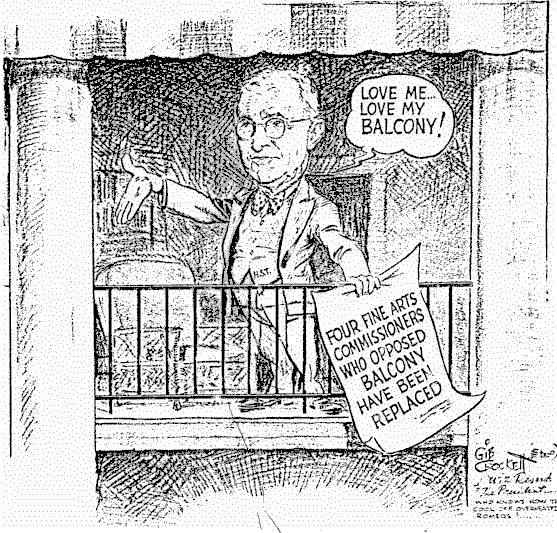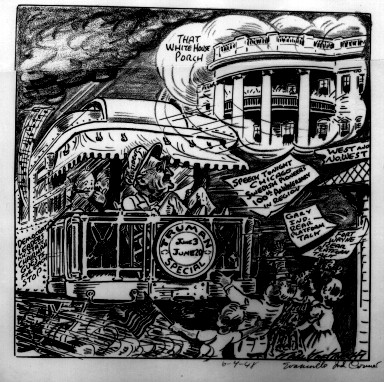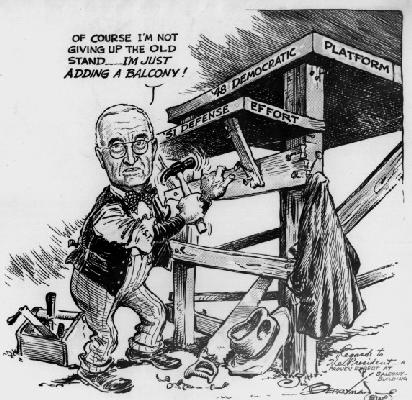Students are familiar with answering questions, however, to be good researchers they need to learn how to formulate questions by first determining what information they already have and then what is still needed to fill in the gaps. They should develop the habit of asking higher level "what?" and "why?" questions. This lesson helps promote these essential questioning skills.
Analyze a collection of political cartoons based on one theme to determine what information is present and what information seems to be missing to tell the story of the event. Students then develop questions as to what more they want or need to know to understand the situation the cartoons are addressing.
Missouri Standards
6. Relationships of the individual and groups to institutions and cultural traditions
7. The use of tools of social science inquiry (such as surveys, statistics, maps, documents)
Kansas Standards
Benchmark 5: The student engages in historical thinking skills.
1. (A) analyzes a theme in United States history to explain patterns of continuity and change over time.
2. (A) develops historical questions on a specific topic in United States history and analyzes the evidence in primary source documents to speculate on the answers.
Print off or view from the computer the collection of 4 cartoons (listed immediately below) about the decision Truman made to add a balcony to the White House.
Cartoons:
Students categorize the cartoons’ information by listing two sets of information:
- What the cartoon tells
- What the cartoon does not tell (Form these into questions)
Then students work in groups to list questions they want or need to know to help them understand the event or situation. From this point on students should generate a variety of questions.
- Teacher Information
- Next:
-
Groups compare their questions with what other groups have decided. Add more or combine and refine. Let student leaders conduct this part of the review session. Might include some discussion of what questions they would like to ask the cartoonist. Combine and refine into one master list of questions.
Brainstorm a list of resources to help find the answers. If using the internet as a resources, students need to include possible sites and finding aides.
- Research:
-
This is a step where students now find the answers. This is NOT necessary in this lesson format focused on questioning. However, students now may want to find some answers. Divide up the questions among pairs of students. Provide encyclopedias, almanac, biographical dictionaries, internet, etc.
The pursuit of answers and their stories about the obstacles they overcome are really more important than the correct answers. When running into dead ends, students could caucus to see if they can find other resources to use.
-
Possible other questions students may decide to include:
Why did he want a balcony?
Who opposed him and why?
Why did he feel it was a good decision?
What other events were happening at this time?
What other questions do these cartoons address or answer?Students may also have some basic questions as to who the people are in the cartoon or what the symbols represent.
- Follow Up:
-
This activity can be translated to any set of cartoons based on a common theme or event.



